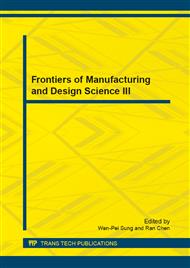p.1195
p.1201
p.1206
p.1211
p.1218
p.1224
p.1229
p.1234
p.1239
Theoretic Analysis of the Effect of Real Gas on the Performance of the T-Groove and Radial Groove Dry Gas Seal
Abstract:
Dry gas seal is a kind of non-contact seal in which gas dynamic and static pressure forming opening force, being with less gas leakage and longer using time. Generally speaking, the gas performance of the dry gas seal is regarded as an ideal gas when the dry gas seal is investigated, designed, and operated. However, some real gas performance may be quite different from the ideal gas when the gas pressure is high. Some gases, such as carbon dioxide, hydrogen and nitrogen, are considered, both the T-groove dry gas seal and the radial groove dry gas seal are analyzed. The virial equation of state is used to express real gas performance, and the effect of real gas on the performance of dry gas seal is analyzed. The results show the maximum relative of opening force error is -4.98% and the maximum relative error of leakage is -20.11% for carbon dioxide; the maximum relative error of opening force is -0.46% and the maximum relative error of leakage is 2.47% for hydrogen; the maximum relative error of opening force is -0.04%, and the maximum relative error of leakage is -0.16% for nitrogen. So the effects of real gas of carbon dioxide and hydrogen have much influence on the performance of the dry seal; but the nitrogen has less influence on the performance of the dry seal.
Info:
Periodical:
Pages:
1218-1223
Citation:
Online since:
December 2012
Authors:
Keywords:
Price:
Сopyright:
© 2013 Trans Tech Publications Ltd. All Rights Reserved
Share:
Citation:


